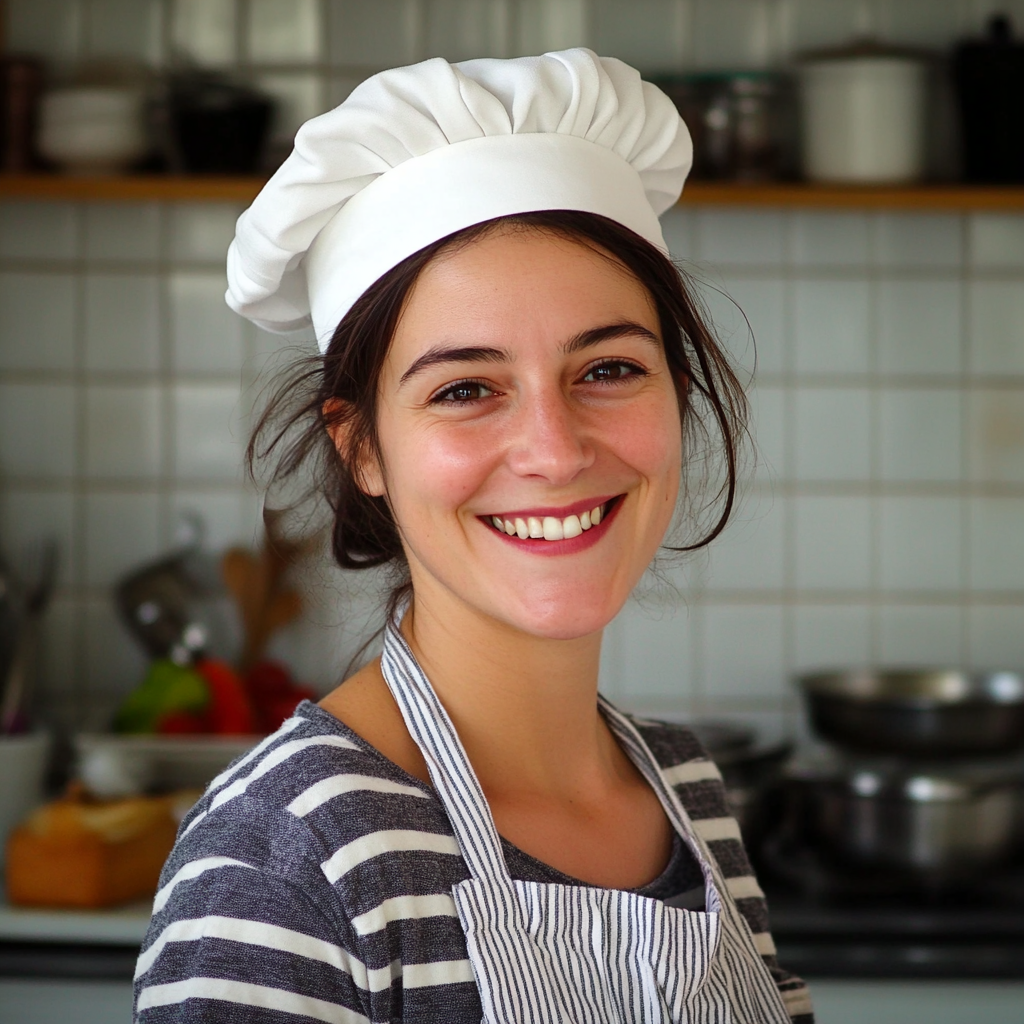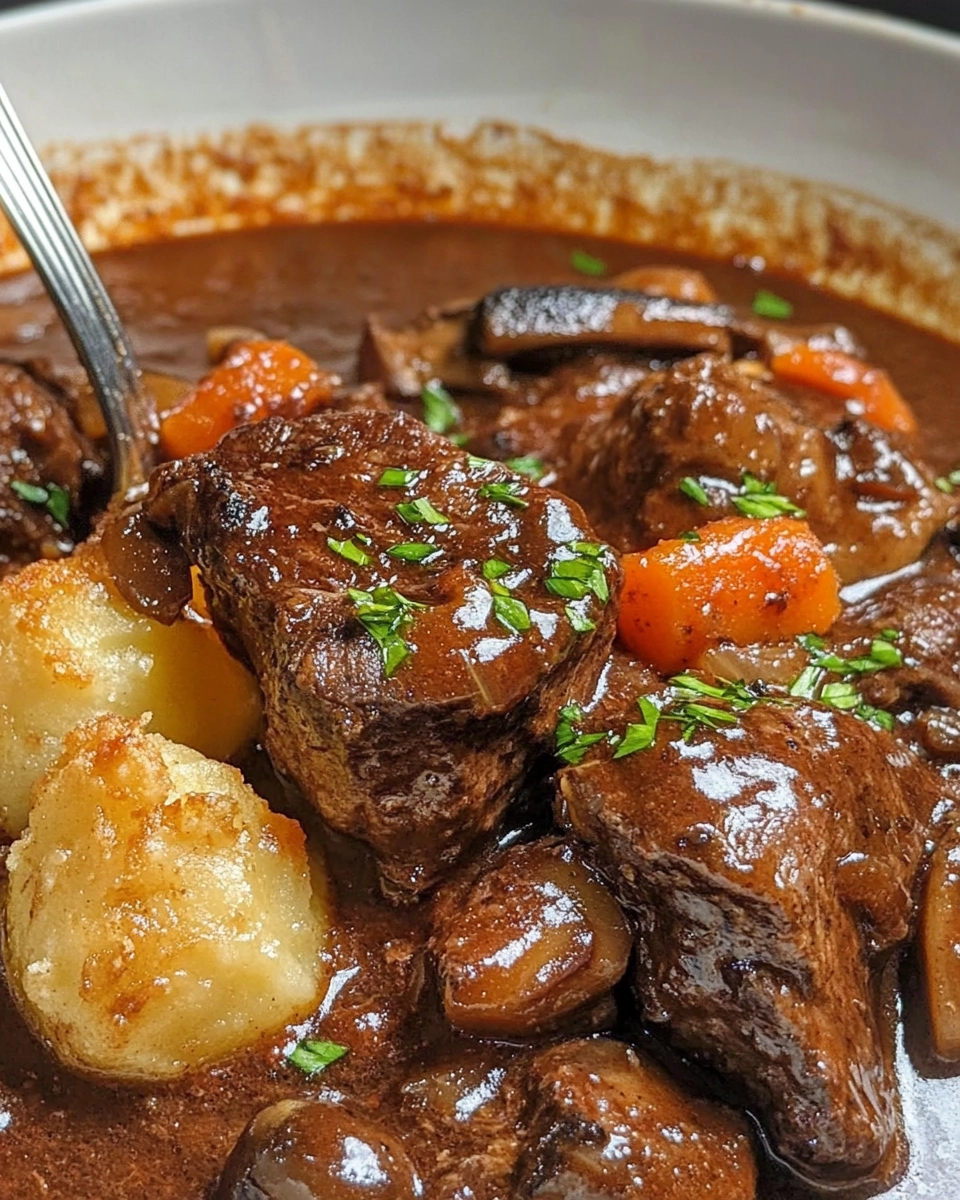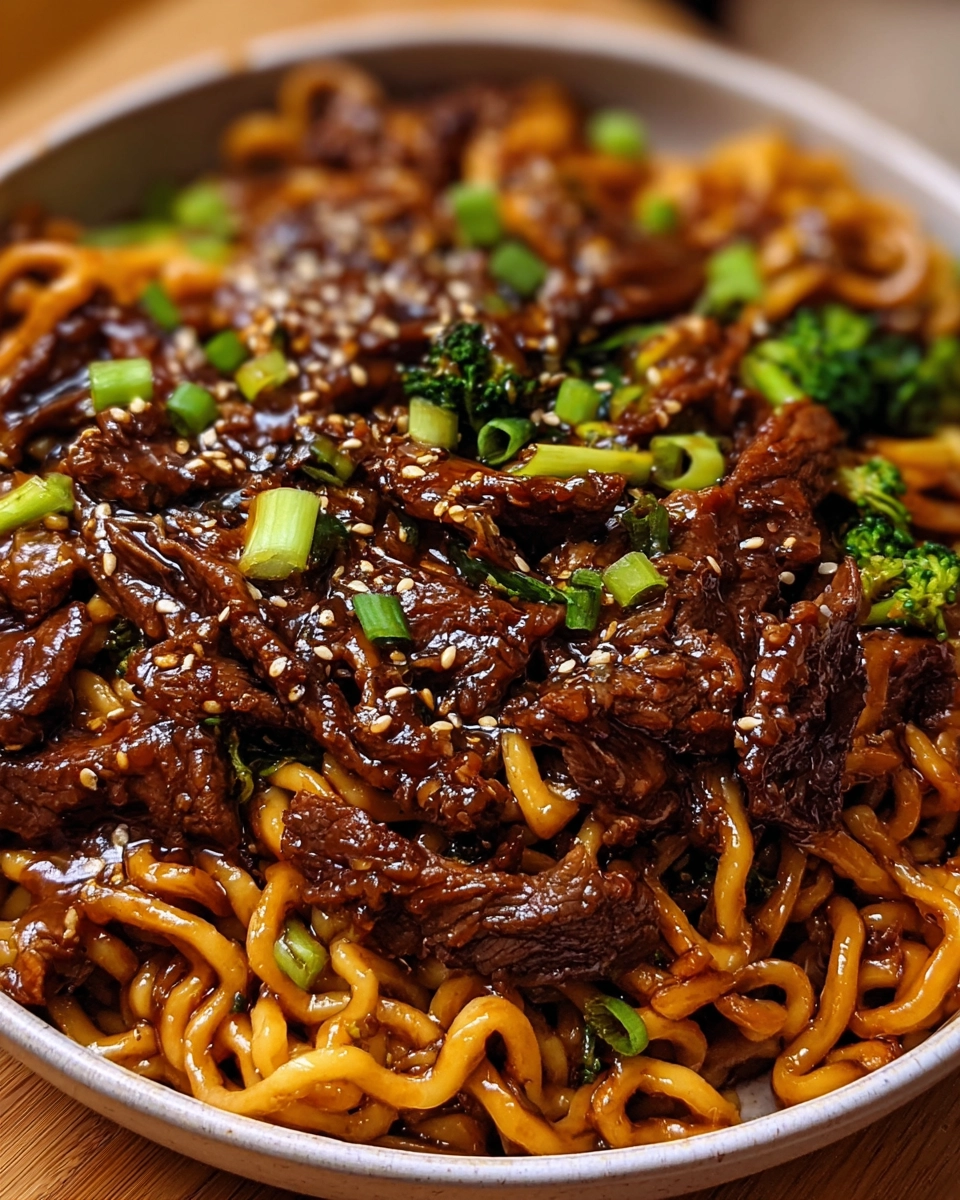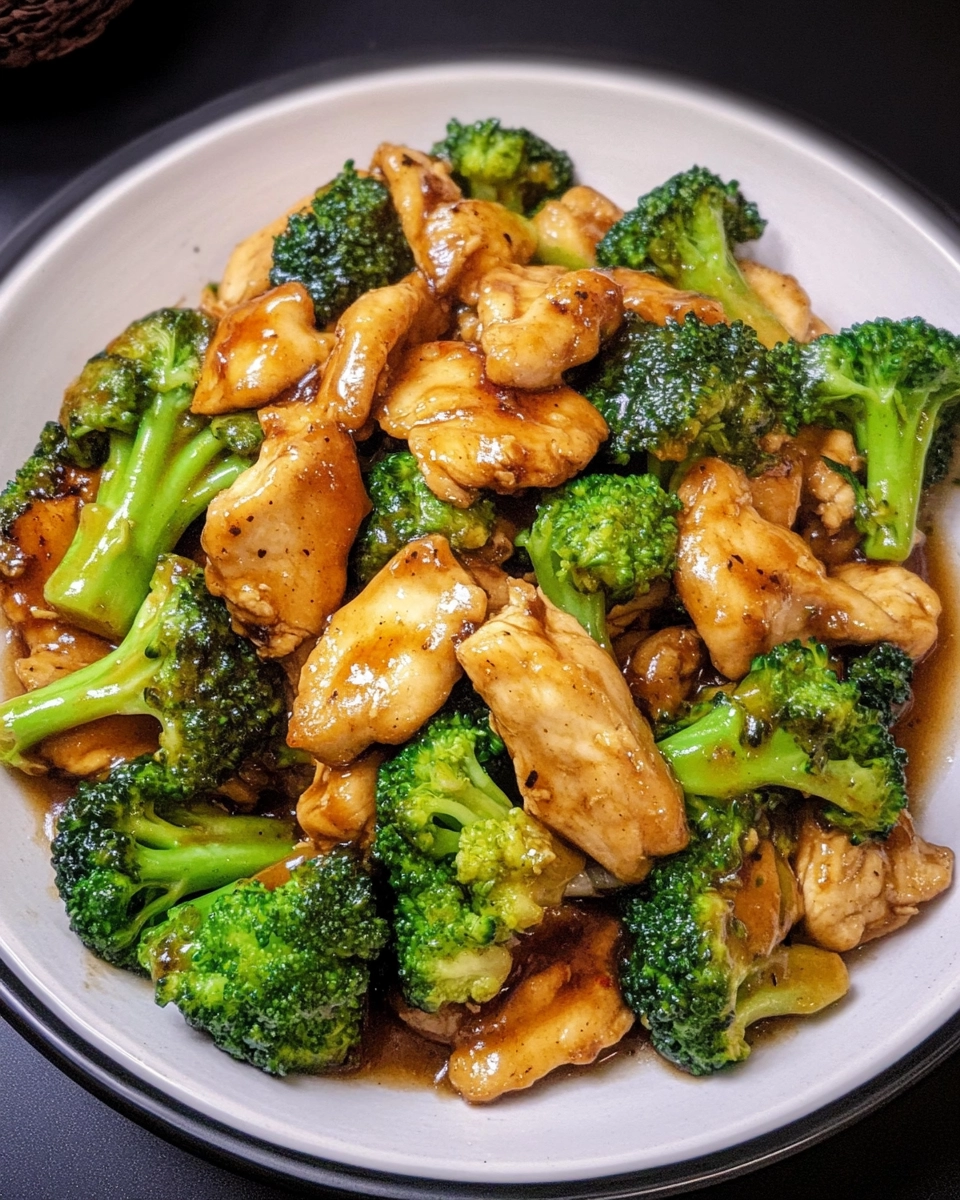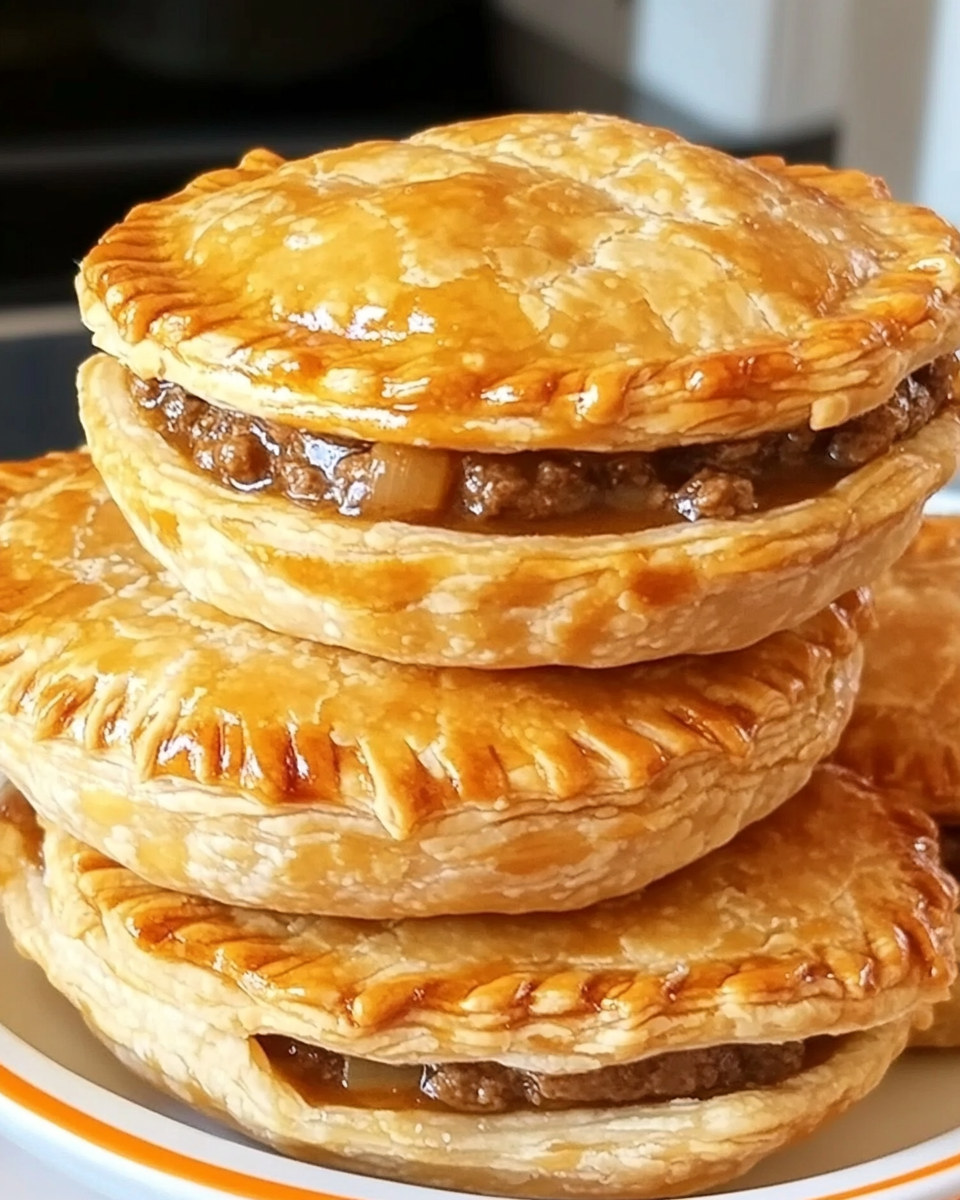Rustic Tuscan-Style Slow Braised Beef Casserole with Hearty Vegetables is the kind of dish that feels like a warm hug. It’s deep. It’s savory. It fills your home with the kind of aroma that makes neighbors slow down as they walk by. And it’s exactly the kind of meal I fell in love with—slow-cooked, soul-soothing, and generous in flavor and comfort.
Hi there!
My name’s Maggie Rae Donovan, and I’m a 42-year-old home cook living just outside of Asheville, North Carolina. I’m not a classically trained chef. I never went to culinary school, and you won’t catch me quoting the greats from glossy cookbooks. But I’ve spent the last 25 years stirring, sizzling, baking, burning (yes, sometimes), and falling madly in love with food in my own little kitchen.
My cooking journey started like most Southern stories do, in my grandmother’s kitchen, where butter was measured with your heart and stories were passed down with every pot of collard greens. I remember being six years old, standing on a chair, watching her fold biscuit dough like it was some kind of magic trick. It stuck with me. Not just the biscuits, but the comfort, the warmth, the way food made people sit down and stay awhile.
Life took its turns. I became a nurse, raised two beautiful daughters, and moved more times than I can count. But one thing remained steady. I always cooked. When money was tight, I got creative. When we were celebrating, I went all out. I found joy in the daily act of feeding people, whether it was a pot of chili on a rainy Sunday or a full Thanksgiving spread with every dish made from scratch.
Some of my best recipes came out of “oops” moments. Adding too much lemon to a cream sauce turned into a bright new favorite. Forgetting to buy breadcrumbs once led me to crush up pretzels instead. My family still asks for “the crunchy chicken.” That’s the magic of home cooking. It’s forgiving. It invites play. It reminds us that perfection is never the point. Connection is.
Now, I spend a lot of time sharing what I’ve learned, on my blog, at local potlucks, and sometimes just by slipping a warm loaf of banana bread onto a neighbor’s porch. I love teaching other home cooks that you don’t need fancy tools or expensive ingredients to make something beautiful. What matters most is showing up, with a little time, a little heart, and maybe a little butter.
If you’re ever in my neck of the woods, don’t be surprised if you smell something simmering. The door’s always open, and I’ll probably ask you to taste-test whatever’s on the stove.
Because to me, cooking isn’t just about food. It’s about home.
And today, home tastes like Rustic Tuscan-Style Slow Braised Beef Casserole with Hearty Vegetables—a dish that’s slow-cooked with love, just the way it should be.
Check out my comforting take on fall-off-the-bone lamb here
Discover another hearty classic with my Tuscan Beef Casserole
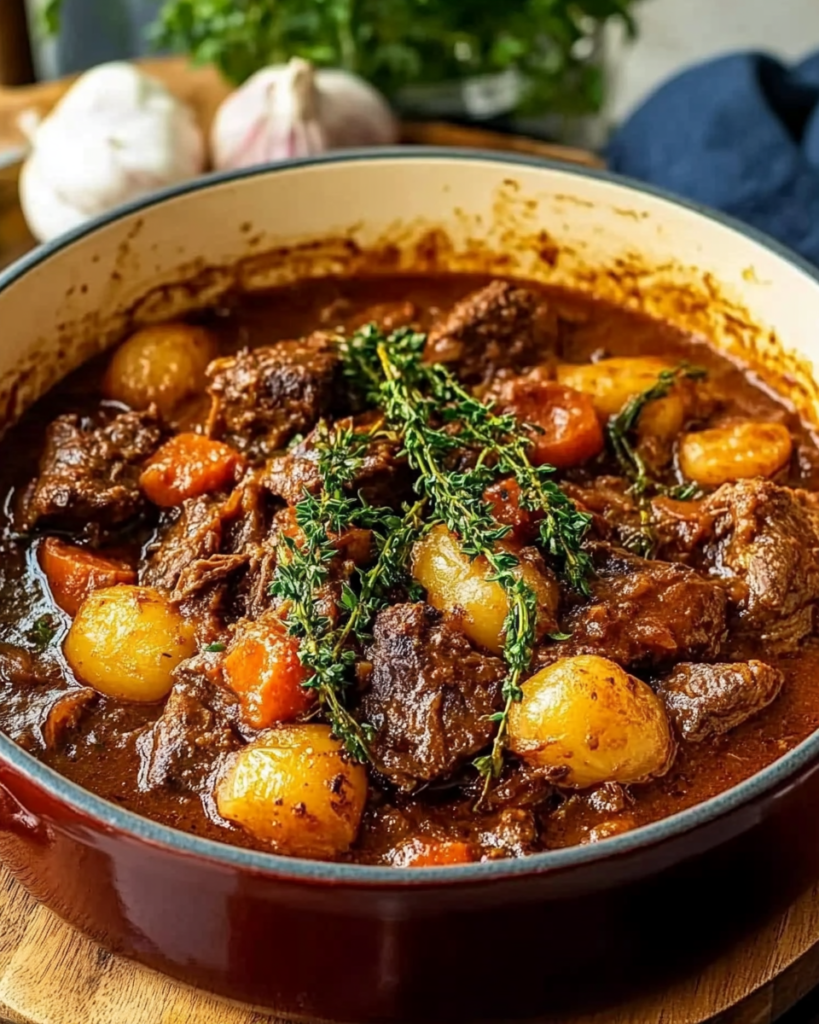
Table of Contents
The Soul of Rustic Tuscan Cuisine
Understanding Tuscan-style beef cooking
Tuscan cuisine is built around simplicity, bold flavors, and patience. It’s not about fussy presentation or high-end ingredients. It’s about making the most of what you have—like beef cuts that need time to tenderize, root vegetables that hold up to long cooking, and fresh herbs that infuse every bite with earthy aroma.
Rustic Tuscan-style slow braised beef casserole with hearty vegetables is a prime example. It’s slow food at its best. The beef is seared until golden, then simmered in a wine-laced tomato broth with garlic, rosemary, and chunky vegetables until everything melds into something utterly comforting.
This dish embraces the Tuscan philosophy: cook low and slow, let the ingredients shine, and serve something that feeds both body and soul.
Why rustic meals are making a comeback
In an era of quick fixes, rustic meals like this braised beef casserole are finding their way back into our kitchens for good reason. They connect us with tradition. They make a house feel like a home. And most importantly, they taste amazing without needing anything complicated.
Here’s why rustic dishes like this are timeless:
- They’re budget-friendly, using humble cuts like chuck or shoulder
- They’re nutrient-rich, packed with vegetables like carrots, celery, onions, and tomatoes
- They’re batch-friendly—perfect for freezing or reheating
- They bring people together with big servings and bold flavors
Plus, if you’re looking to eat fewer processed foods, this casserole hits the mark. No fillers, no artificial stuff—just real food, cooked slow.
Looking for more cozy low-carb casseroles?
Check out this Chicken, Spinach & Mushroom Oven Dish
Choosing the Best Cuts for Slow-Braised Beef Casserole
What beef is best for braising?
When it comes to slow braising, you want beef that’s marbled with fat and rich in connective tissue—because after hours of gentle simmering, that tough meat transforms into melt-in-your-mouth perfection. For this Rustic Tuscan-style slow braised beef casserole, the right cut makes all the difference.
Here are the top options for a deeply flavorful, tender result:
| Beef Cut | Why It Works | Flavor Profile |
|---|---|---|
| Chuck roast | Affordable and marbled | Bold, beefy, fork-tender when slow cooked |
| Beef shoulder | Holds shape during braising | Meaty and hearty |
| Short ribs | Rich in fat and collagen | Silky and luxurious |
| Brisket | Needs long cook time | Deep, earthy, satisfying |
| Shin or shank | Gelatinous and rich | Great for stew-style texture |
Chuck roast is my go-to because it’s easy to find, budget-friendly, and braises beautifully. You can cut it into large chunks so they stay juicy and firm throughout the cook.
Prepping beef the Tuscan way: searing matters
One of the most important steps in any braised beef dish is the sear. That golden crust isn’t just for looks—it creates the Maillard reaction, which deepens flavor and gives your casserole that irresistible savory edge.
Here’s how to do it right:
- Pat your beef dry with paper towels before seasoning. Moisture prevents browning.
- Season generously with salt and pepper.
- Heat olive oil in a heavy Dutch oven or braiser until shimmering.
- Sear in batches, without crowding the pan, until a deep golden crust forms on each side.
That brown fond at the bottom of your pan? That’s flavor gold. You’ll deglaze it with wine or broth in the next step to make a base for your sauce.
For more beef-forward recipes with bold, rustic flavors,
don’t miss our Tuscan Beef Casserole variation
Hearty Vegetables That Hold Up to Braising
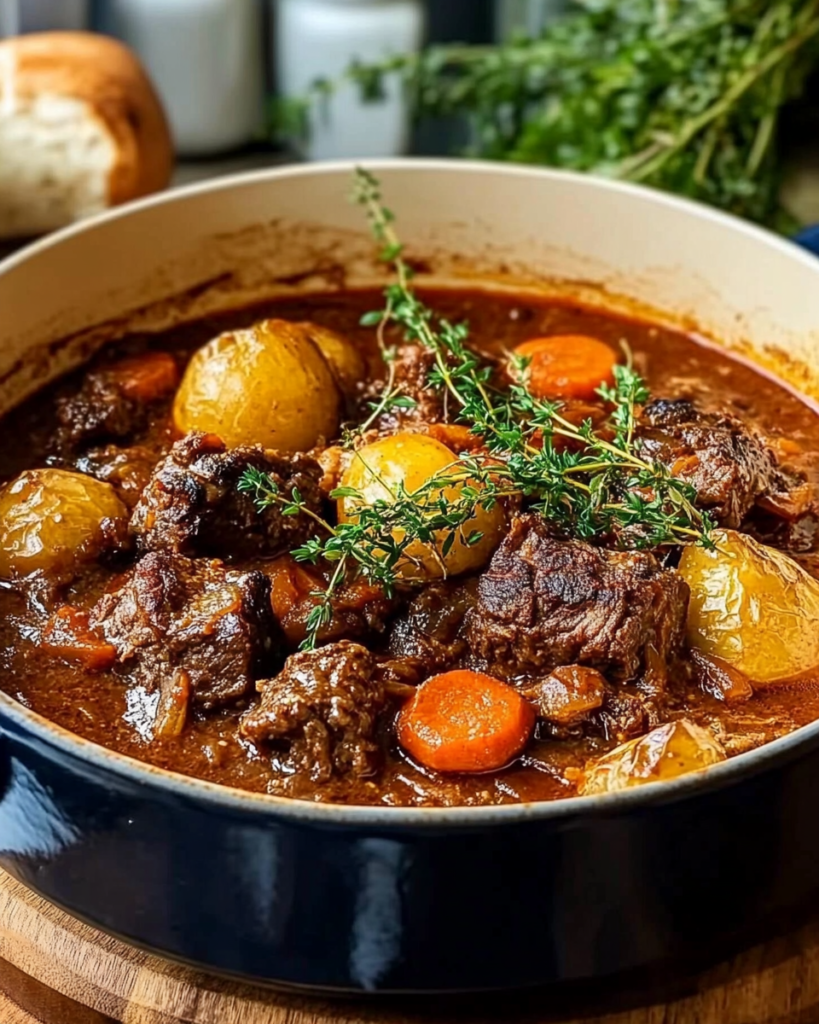
What vegetables work best in a rustic beef casserole?
Vegetables in a Rustic Tuscan-style slow braised beef casserole with hearty vegetables aren’t just there to fill the pot. They’re chosen for how well they absorb flavor, hold their shape, and add richness to every spoonful.
You want sturdy, root-based vegetables that don’t turn to mush after hours of cooking. Think rustic, earthy, and full of soul.
Here are the MVPs of a Tuscan casserole:
| Vegetable | Texture After Braising | Flavor Benefit |
|---|---|---|
| Carrots | Soft, not mushy | Sweetness and color contrast |
| Celery | Tender, aromatic | Adds depth and natural saltiness |
| Onions | Jammy and savory | Forms the flavor base |
| Garlic | Buttery, mellow | Essential Tuscan flavor |
| Tomatoes | Saucy and rich | Adds acid and body to the braise |
| Mushrooms | Meaty, absorbent | Soaks up beefy broth perfectly |
| Turnips | Mild, hearty | Great low-carb potato alternative |
| Zucchini (added late) | Soft, not broken down | Adds moisture and freshness |
Tuscan cooking is all about using what’s seasonal and local. Feel free to adapt based on what’s in your garden, your CSA box, or your market bin.
Timing is everything: layering your vegetables
Not all vegetables belong in the pot at the same time. Some need longer to break down, while others do best when added toward the end. Here’s a basic layering guide:
- First Layer (sauté with beef or in fond): onion, garlic, celery
- Midway Additions (braise-friendly): carrots, turnips, mushrooms
- Final 20 Minutes: zucchini, leafy greens like kale or spinach
If you’re going low carb, sub out starchy potatoes for chopped turnips or cauliflower florets—they mimic texture but cut the carbs in half.
Discover another rustic, veggie-rich dish with our low-carb oven chicken bake
Building Bold Tuscan Flavor—Layer by Layer
The foundation of Tuscan braised beef: aromatics, tomato, and wine
In true rustic Tuscan fashion, the secret to mouthwatering slow braised beef casserole with hearty vegetables lies in layering flavor slowly and intentionally. There’s no rushing the magic here.
Once the beef is seared and vegetables are chopped, it’s time to turn those browned bits at the bottom of your pan into a deeply savory, rich braising liquid.
Here’s how to do it, the Tuscan way:
Step 1: Deglaze with red wine
Use a dry, medium-bodied red wine like Chianti, Montepulciano, or Cabernet Sauvignon. Scrape up every bit of browned flavor stuck to the bottom of the pot as the wine bubbles.
Tip: Let it reduce by half. This concentrates the flavor and burns off alcohol.
Step 2: Add tomato paste and crushed tomatoes
Tomato paste gives a thick, umami-rich base. Follow that with canned crushed tomatoes or fresh peeled tomatoes if in season.
| Ingredient | Amount | Purpose |
|---|---|---|
| Red wine | 1 cup | Acidity and depth |
| Tomato paste | 2 tbsp | Thickness and umami |
| Crushed tomatoes | 1 can (14 oz) | Rich body and sauce |
Herbs and aromatics: the true soul of Tuscan cooking
No Tuscan dish is complete without a few aromatic heavy-hitters. These transform a simple beef casserole into something deeply memorable.
- Garlic – sliced or smashed, not minced. It mellows into butteriness while cooking
- Fresh rosemary – woody and bold, ideal for slow braises
- Thyme and oregano – for balance and earthy warmth
- Bay leaves – subtle bitterness that balances sweetness from veggies
- Cracked black pepper & sea salt – always season as you go
Optional but flavorful additions:
- A parmesan rind (for a nutty depth as it simmers)
- A pinch of red pepper flakes (for soft heat)
- A swirl of balsamic vinegar before serving (to brighten it up)
Broth: sealing it all together
Finally, pour in a hearty beef broth or bone broth until your beef and vegetables are just covered. This ensures everything cooks evenly and absorbs all those bold Tuscan flavors over time.
Simmer low and slow, or transfer to the oven at 325°F for 2.5–3 hours.
Looking for inspiration on other slow-cooked classics?
Don’t miss our red wine-braised lamb shank recipe
How to Cook the Perfect Slow Braised Tuscan Beef Casserole
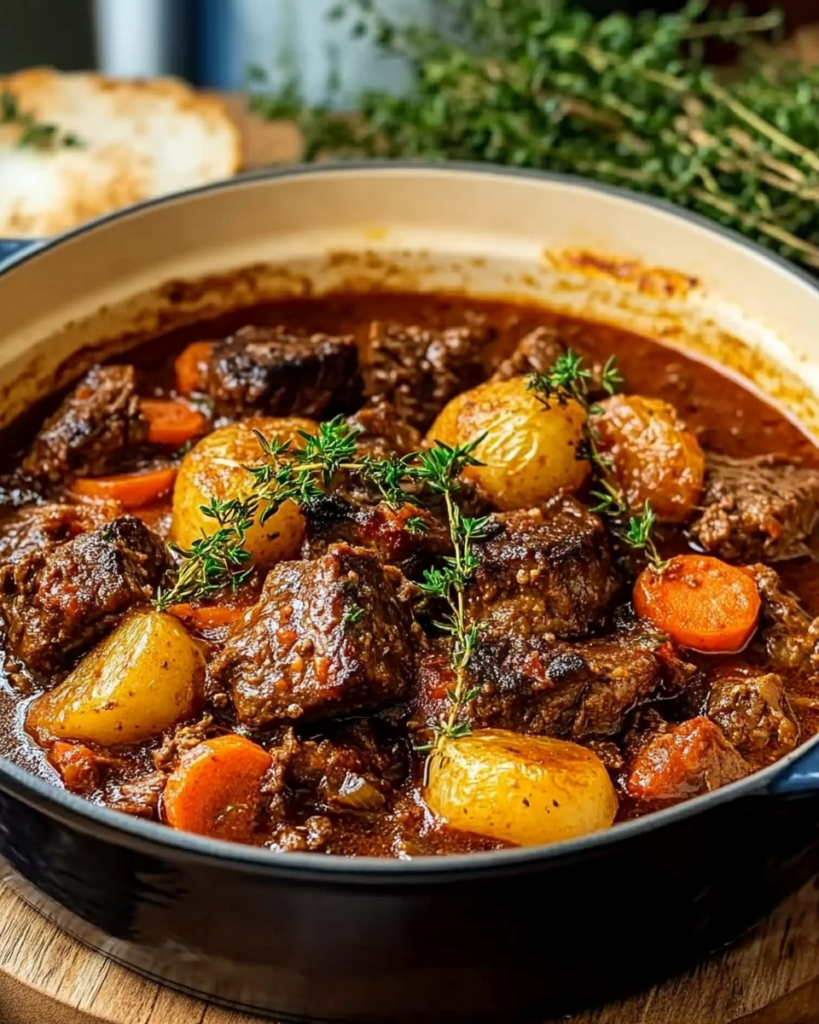
From stovetop to oven: the step-by-step method
Making a Rustic Tuscan-style slow braised beef casserole with hearty vegetables isn’t just about flavor. It’s about the slow transformation that happens when simple ingredients are given time to develop.
Here’s how to bring it all together in a way that feels both rustic and refined:
Step-by-step cooking instructions
1. Sear the beef
- Heat olive oil in a Dutch oven over medium-high heat.
- Sear beef chunks in batches until well-browned on all sides.
- Remove and set aside.
2. Sauté your aromatics
- In the same pot, add chopped onions, garlic, celery, and carrot.
- Cook until softened, scraping the brown bits off the bottom.
3. Deglaze and build your base
- Pour in your red wine to deglaze the pan. Let it simmer for 3–5 minutes.
- Stir in tomato paste, crushed tomatoes, herbs, and seasoning.
4. Return the beef
- Add seared beef back into the pot, nestling it into the sauce.
- Add mushrooms, turnips, or other sturdy vegetables.
5. Add broth
- Pour in enough beef broth to just cover the ingredients.
- Drop in a bay leaf or rosemary sprig.
6. Slow cook it
- Cover with a tight lid.
- Braise in the oven at 325°F (165°C) for 2.5 to 3 hours, or until beef is fork-tender.
- Alternatively, simmer gently on the stovetop for the same time.
Final touches before serving
- Remove bay leaf and rosemary sprigs
- Taste and adjust seasoning
- Optional: swirl in a spoonful of balsamic vinegar for brightness
- Garnish with chopped fresh parsley or shaved parmesan
Let the casserole sit for 10 minutes before serving. This allows the flavors to settle and thicken slightly.
Pro tip: This dish tastes even better the next day after resting overnight. The flavors deepen and marry beautifully.
For another melt-in-your-mouth, slow-braised winner,
try our Slow-Braised Lamb Shanks with Rosemary
Making It Low-Carb and Keto-Friendly Without Losing Flavor
Is braised beef casserole low-carb?
Absolutely. The beauty of Rustic Tuscan-style slow braised beef casserole with hearty vegetables is that it’s already naturally low in carbohydrates, especially when made without flour, potatoes, or thickening agents. By swapping a few classic ingredients, you can keep it hearty and comforting while staying keto-compliant.
Let’s break it down.
Low-carb swaps for traditional ingredients
| Classic Ingredient | Low-Carb Substitute | Why It Works |
|---|---|---|
| White potatoes | Turnips or rutabaga | Mimics starchiness, but fewer carbs |
| Flour (for thickening) | Skip or use xanthan gum | Let reduction naturally thicken sauce |
| Carrots (in moderation) | Use half amount or add red bell pepper | Keeps color and sweetness |
| Wine (optional) | Use only ½ cup or skip entirely | Adds depth, but can reduce carbs by limiting |
This dish doesn’t need a roux or starch to be rich. The slow-cooked beef releases gelatin that naturally thickens the sauce as it simmers.
Choosing keto-friendly veggies
Stick to fiber-rich, low-glycemic vegetables that hold up to braising:
- Zucchini (added late to avoid mushiness)
- Cauliflower florets
- Cabbage
- Eggplant cubes
- Green beans
- Mushrooms
Keep starchy root vegetables like parsnips or sweet potatoes to a minimum if you’re strictly following a keto plan.
Nutritional profile (estimated per serving)
| Nutrient | Amount |
|---|---|
| Calories | ~370 kcal |
| Protein | 30–35g |
| Net Carbs | 5–7g |
| Fat | 22–25g |
| Fiber | 2–3g |
| Sugar | <4g |
| Sodium | ~400mg |
Note: Nutritional values will vary depending on the exact ingredients used.
This makes it ideal for anyone following a low-carb, keto, or even diabetic-friendly eating plan—without sacrificing the Tuscan soul of the dish.
Want a vegetarian twist that’s also keto-aligned?
Check out this low-carb oven-baked spinach and mushroom recipe
Perfect Pairings for a Hearty Tuscan Beef Casserole
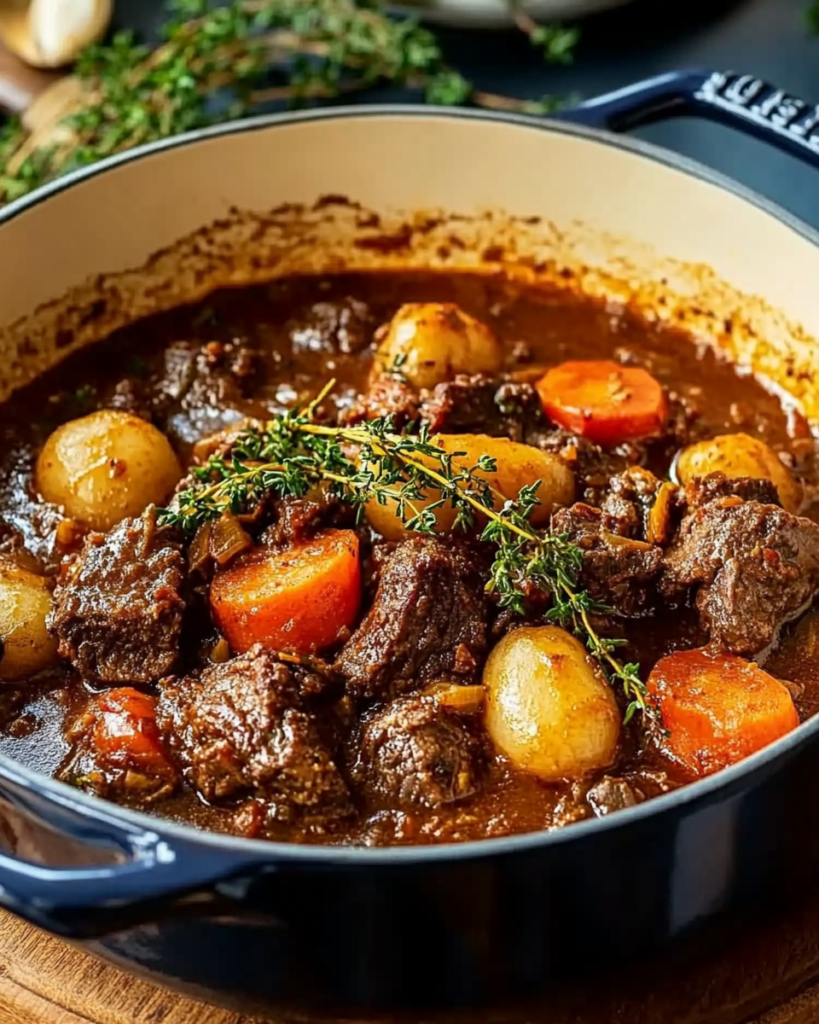
What to serve with Tuscan-style braised beef?
Rustic Tuscan-style slow braised beef casserole with hearty vegetables is rich, bold, and comforting—which means your side dishes should balance or complement its intensity without overshadowing the dish.
Depending on your dietary preferences, you can go traditional, low-carb, or somewhere in between.
Classic Tuscan-inspired side dishes
If you’re leaning into authenticity, these are wonderful sides to pair with your casserole:
- Creamy polenta – Soaks up all that savory tomato-wine sauce beautifully
- Garlic rosemary focaccia – Rustic, chewy bread that feels homemade
- Crusty Italian bread – For sopping up the last bits of sauce
- Rosemary roasted potatoes – Earthy, crisp, and flavorful
- Simple arugula salad with lemon vinaigrette – A peppery contrast to the rich beef
Low-carb and keto-friendly sides
Trying to keep things lighter or on the keto track? No problem. These options are flavorful and fit the bill:
- Cauliflower mash – Creamy and satisfying without the starch
- Zucchini noodles – Tossed with olive oil and herbs
- Grilled eggplant slices – Slightly smoky, soft, and perfect under saucy beef
- Steamed green beans with garlic butter – Bright and snappy
- Parmesan-crusted roasted cabbage wedges – Low-carb, crispy, and surprisingly hearty
Wine and beverage pairings
To truly channel that Tuscan countryside charm, wine is a must. Here are a few pairings that play off the casserole’s richness:
| Wine Type | Flavor Notes | Why It Works |
|---|---|---|
| Chianti | Dry, cherry, herbal | Classic Tuscan pairing |
| Sangiovese | Medium body, acidic, earthy | Cuts through the richness |
| Zinfandel | Bold, jammy, spicy | Great with tomato and garlic |
| Dry red blend | Balanced tannins, smooth finish | Ideal with braised meats |
If you’re skipping wine, a rosemary-lemon infused sparkling water or an herbal iced tea with thyme and honey also plays nicely.
Looking for another rustic side that complements Tuscan flavors?
Try these Savory Spinach Feta Puff Pastry Bites
PART 8: Storage, Freezing, and Make-Ahead Tips
How to store your Tuscan beef casserole for later
One of the best things about Rustic Tuscan-style slow braised beef casserole with hearty vegetables is how beautifully it stores. In fact, it might taste even better the next day as the flavors continue to deepen.
Whether you’re meal prepping or just saving leftovers, here’s how to keep it tasting amazing:
Short-term storage (up to 4 days)
- Let it cool completely before transferring to airtight containers
- Store in the refrigerator for 3 to 4 days
- Reheat gently on the stove over low heat, adding a splash of broth if it thickens too much
You can also reheat in the microwave, but for best results, cover loosely and heat in 1-minute intervals, stirring between each.
Freezing tips (up to 3 months)
Braised dishes like this are perfect for freezing. The flavors hold up and the texture stays satisfying.
To freeze:
- Let casserole cool completely
- Portion into freezer-safe containers or bags
- Label with date and contents
- Lay flat in freezer for space-saving storage
To reheat from frozen:
- Thaw overnight in the fridge
- Reheat in a Dutch oven or covered dish at 300°F until warmed through
- Add extra broth if needed to loosen the sauce
Make-ahead advice
Want to prep this ahead for a busy week or dinner party?
Here’s what you can do:
- Day before: Sear meat and sauté aromatics, then refrigerate in a covered Dutch oven
- Day of: Pull from fridge, bring to room temp, add broth and bake
- Or: Fully cook and reheat gently before serving
Bonus: It’s even better the next day, so don’t be afraid to build in a day of rest before serving for maximum flavor.
Meal-prepping this casserole? Pair it with our Crustless Quiche Lorraine with Bacon and Cheese for variety during the week.
Frequently Asked Questions (FAQ)
What is Tuscan-style beef?
Tuscan-style beef refers to traditional Italian methods of preparing beef with slow cooking, bold herbs like rosemary and thyme, and staples such as tomatoes, garlic, and red wine. The flavors are earthy, rustic, and deeply satisfying—perfect for dishes like this slow braised beef casserole with hearty vegetables. It’s not spicy but rich, balanced, and comforting.
What do I need for a beef casserole?
At its core, a great beef casserole needs just a few key elements:
A marbled cut of beef (like chuck roast or shoulder)
Aromatic base of onions, garlic, and celery
Tomatoes and red wine for depth and acidity
Beef broth to create a luscious sauce
Hearty vegetables that can handle long cooking
Fresh herbs like rosemary, bay leaf, and oregano
Time—low and slow braising is the key
This rustic Tuscan-style version brings all of those together with a Mediterranean twist.
What is the difference between braised beef and beef stew?
Great question. While similar, the two differ in method and texture:
Feature
Braised Beef
Beef Stew
Liquid Level
Partially covers the beef
Fully covers ingredients
Texture
Beef is fork-tender, veggies whole
More mixed, sometimes mushier
Cooking Method
Slow-cooked in oven or stovetop
Usually simmered on stovetop
Sauce Consistency
Rich, concentrated
More soupy or brothy
Braised beef is more refined and restaurant-worthy. Stew is humble, comforting, and a little more rustic. This Tuscan beef casserole sits somewhere between the two—flavorful and fork-tender, but hearty enough for a casual family dinner.
What is rustic beef?
Rustic beef refers to beef recipes that are unpretentious, slow-cooked, and inspired by countryside traditions. They focus on whole ingredients, generous seasoning, and deep flavors rather than complicated technique.
In this Rustic Tuscan-style casserole, “rustic” means:
Large, visible chunks of beef and vegetables
Cooked in one pot
Flavor-first, presentation second
Nourishing and soulful
It’s the kind of dish you serve family-style, with plenty of sauce to mop up with bread or roasted vegetables.
Need more rustic dinner ideas?
Try this Red Wine-Braised Lamb Shank or
Explore our Tuscan Chicken Bake variation
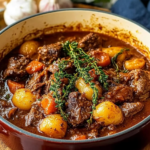
Rustic Tuscan-Style Slow Braised Beef Casserole with Hearty Vegetables
- Total Time: 3 hours 30 minutes
- Yield: 6 generous servings 1x
Description
Rustic Tuscan-style slow braised beef casserole with hearty vegetables is bold, comforting, and keto-friendly. Try this slow-cooked Italian classic!
Ingredients
2.5 lbs chuck roast or beef shoulder, cut into chunks
2 tbsp olive oil
1 large yellow onion, chopped
2 celery stalks, diced
2 carrots, peeled and sliced
4 garlic cloves, sliced
1 tbsp tomato paste
1 can (14 oz) crushed tomatoes
1 cup dry red wine (Chianti or Cabernet recommended)
2 cups beef broth
2 cups mushrooms (optional)
1 small turnip or 1 cup chopped cauliflower (low-carb substitute for potatoes)
2 sprigs fresh rosemary
1 tsp dried oregano
1 bay leaf
½ tsp sea salt
½ tsp black pepper
Optional: 1 tsp balsamic vinegar (for brightness)
Instructions
Sear the beef: Heat olive oil in a Dutch oven. Sear beef chunks on all sides until browned. Remove and set aside.
Sauté aromatics: In the same pot, add onion, celery, carrots, and garlic. Cook until softened.
Deglaze with wine: Pour in red wine, scraping up browned bits. Simmer 5 minutes.
Build the braise: Stir in tomato paste, crushed tomatoes, oregano, and rosemary. Return beef to the pot. Add mushrooms and turnip. Pour in broth until just covered. Add bay leaf.
Slow cook: Cover and braise in the oven at 325°F for 2.5 to 3 hours, or until beef is fork-tender.
Final seasoning: Discard bay leaf. Adjust salt and pepper. Optional: stir in balsamic vinegar. Rest 10 minutes before serving.
Serve: Ladle over cauliflower mash, polenta, or enjoy solo with crusty bread or greens.
Notes
Make it ahead: Casserole tastes even better the next day. Reheat gently on stovetop or in oven.
- Prep Time: 30 minutes
- Cook Time: 3 hours
- Category: Dinner, Comfort Food
- Method: Dinner, Lunch, Meal Prep
- Cuisine: American / Low-Carb
Nutrition
- Calories: ~370 kcal

